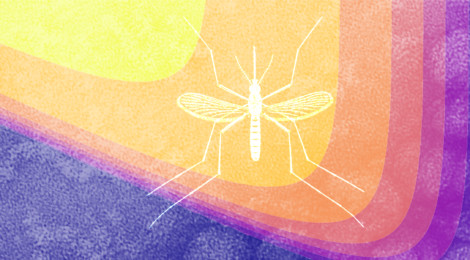
Impacts of climate change on mosquito-borne diseases
As the planet warms, the behavior and distribution of mosquitoes is expected to change. But it’s not just about the mosquitoes; it’s also about the animals they bite and the environments where they all live. To put all these pieces together, we recently developed a new theory about the interplay between climate change, mosquitoes, and the vertebrate hosts they prey upon.
The study focused on a crucial but often overlooked aspect: the behavior and availability of vertebrate hosts, which are integral to the mosquitoes’ lifecycle and the transmission of pathogens. By modifying the classical Ross-MacDonald model to more realistically represent the effect of host abundance on mosquito feeding, we explored how temperature variations could impact disease spread. Specifically, the classical Ross-MacDonald model makes the assumption that biting tolerance of hosts as well as their abundance are unlimited.

Relaxing these assumptions, we found that biting tolerance has little impact on thermal optimum of transmission when there is heavy host density, or biting tolerance is high. But, when host availability is reduced (or vertebrate host populations behave in ways that reduce vector-host contact), the overall thermal optimum of transmission can shift considerably. Thus, one of our key findings is that temperature changes can significantly alter the temperature at which disease transmission is maximized, which we call the “thermal optimum for transmission.” Surprisingly, this optimum can shift by as much as 5 degrees Celsius.
Moreover, our models highlighted how the relationships between host availability, biting tolerance, and temperature are nonlinear. This means that the spread of mosquito-borne diseases is influenced by a delicate balance of factors, with both high and low host densities impacting transmission potential in unexpected ways.
To learn more, find this paper at ESA, Ecological Monographs.
Corresponding Author: John Drake, jdrake@uga.edu





